![]()
![]() One year ago today was a day of icy splendor, with plenty of penguins too. We’ve already shown you some of our photos from this portion of the trip, in our explainer on ice in a multitude of forms. Here’s a bit more of what we experienced on 22nd December 2013.
One year ago today was a day of icy splendor, with plenty of penguins too. We’ve already shown you some of our photos from this portion of the trip, in our explainer on ice in a multitude of forms. Here’s a bit more of what we experienced on 22nd December 2013.
Lightly edited from Anne’s shipboard journal:
“We got up at 5 am to see the Weddell Sea. The ship had traveled overnight down the length of the Antarctic Sound, known as “Iceberg Alley”, and was going to nose into the ice-choked Weddell Sea while rounding the volcanic Rosamel Island* before traveling back up the Antarctic Sound to a stop on Joinville Island.
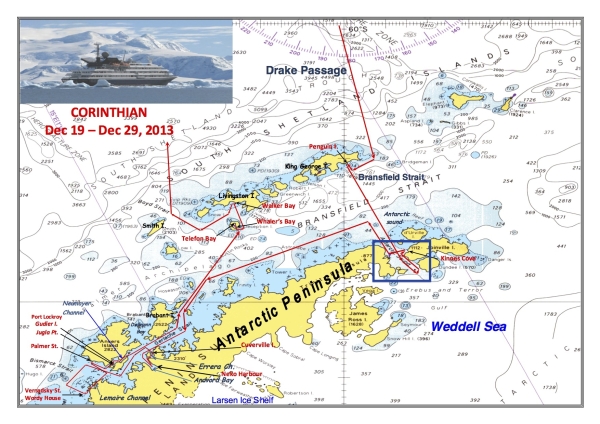
The ship’s map of our voyage along the Antarctic Peninsula and surrounding islands. The blue box near the tip of the Antarctic Peninsula indicates where we were on 22 December. Click for a larger version.
At 5 am, the light was amazing and the sea was dead calm and glassy. I didn’t know seas could be that calm. We could see the ripples out from penguins which were “porpoising” and occasionally jumping off ice floes. As far as the Weddell Sea, you couldn’t so much see it as sense its vast iciness and think back to Nordenskjöld, Larsen and the crew of the Antarctic getting stuck and overwintering near here a century ago.”
Later there was a landing on Joinville Island and Chris went ashore. Here’s what he had to say in his shipboard journal: “After cruising back along the glassy Antarctic Sound, our morning stop was at the Madder Cliffs in Kinnes Cove [of Joinville Island]. I was in one of the earlier zodiacs, was turned out to be a good thing as right after I landed, the expedition staff decided it was too risky in the heavy swell to land any more zodiacs. The landing was advertised as a place you could watch the Adelie penguins “commute” from their rookeries higher up the cliffs from the shore, but most of the action was at the shore itself. At least one of the Adelie penguins at one of the lower rookeries had a chick, and I got some great pictures of a queue of feeding Adelies hurling themselves off a rocky promontory one by one.”
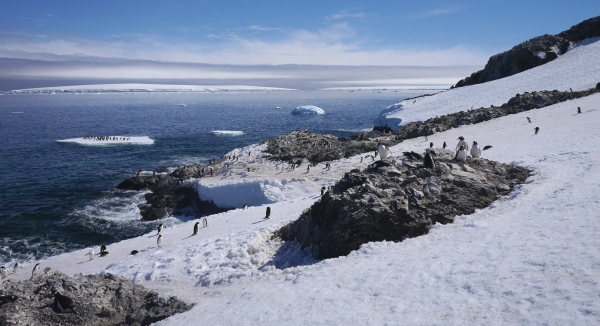
Nesting Penguins at Kinnes Cove, Antarctica. Bare rock close to the shore is prime real estate. Photo: Chris Rowan, 2013.
It turned out that this was also our first look at the third of the three penguin species we saw on our trip: the orange-beaked Gentoos.
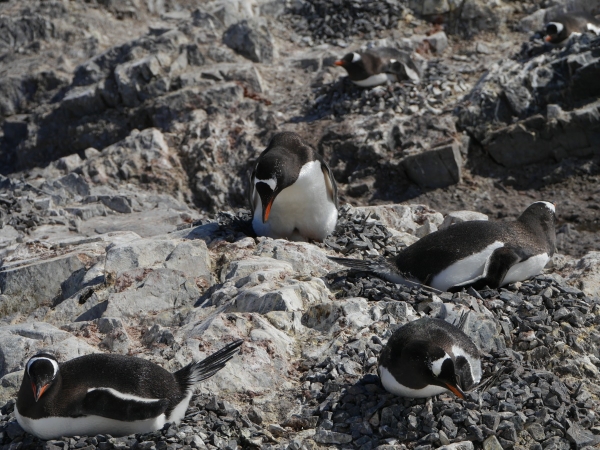
Nesting Gentoo penguins, Kinnes Cove, Antarctica. You can see a glimpse of an egg in the topmost nest. Photo: Chris Rowan, 2013.
And here’s the Adeles on their feeding commute:
Returning to Anne’s journal:
“The landing sounded a bit tricky, so GeoKid and I opted to take only a zodiac tour instead. But the zodiac ride was amazing. GeoKid got to sit at the front as we zipped among the bergy bits, watched penguins hop from the rocks into the water, and saw a penguin “birthday party” (i.e., lots of penguins on a flat bock of ice). We also saw a floe with a seal resting on it and saw a penguin leap right up onto the ice next to it. Then the Weddell seal stretched, flexed, and posed for a photo.
After lunch, we looked out on deck at some very large icebergs and caught a distant view of Argentina’s Esperanza station at Hope Bay. Chris wrote “The early afternoon cruise toward Bransfield Strait involved a cruise past one of several large tabular icebergs in the vicinity. It was a nice exercise in being made to feel small, as the tabular berg in question was a good half kilometer wide and long, and its steep icy sides projected a good 40-50 m above our little ship. There was also a small mass wasting event on the side we buzzed, which I managed to accidentally catch on video. I only realized it had happened when I saw the splash of icy fragments expanding away from the cliffs.”
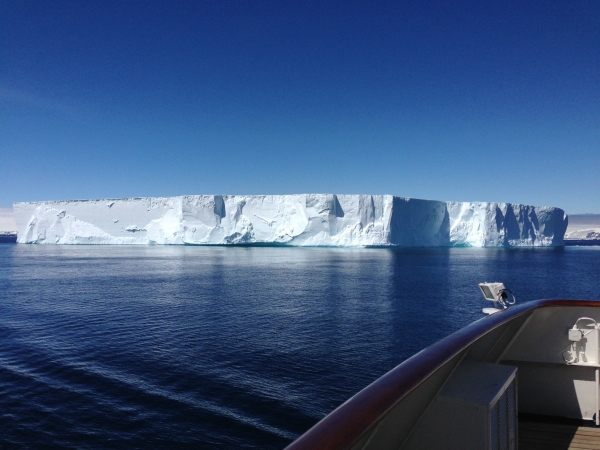
Cruising around a tabular iceberg in Antarctic Sound, also known as ‘Iceberg Alley’ for some reason. Photo: Chris Rowan, 2013.
*More on Rosamel Island: Rosamel Island is part of the James Ross Island volcanic group (1-5 Ma), which “probably represent[s] the eroded remnants of an extensive basaltic plateau which was essentially confined to the south-eastern side of the Trinity Peninsula and the offlying islands.” The group is largely absent from the Antarctic Peninsula mainland, suggesting a strong structural control on the distribution of volcanism. Rosamel Island appears to be comprised of “yellow tuff”, including “primary pyroclastic material with palagonite, some also containing dark subaerial bombs and scoria, and a variety of redistributed facies showing current bedding and wash-out structures (Baker et al., 1973, British Antarctic Survey Bulletin).”

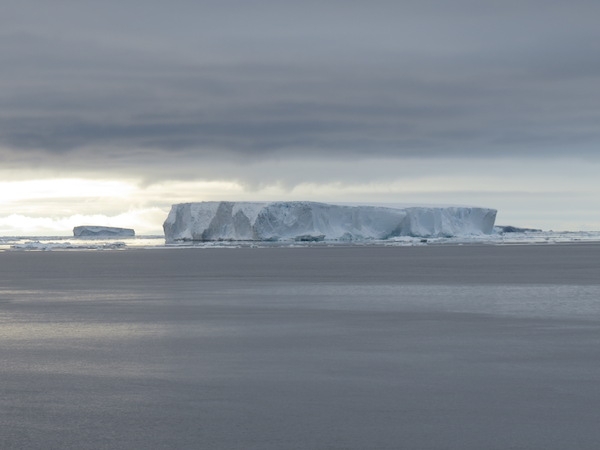

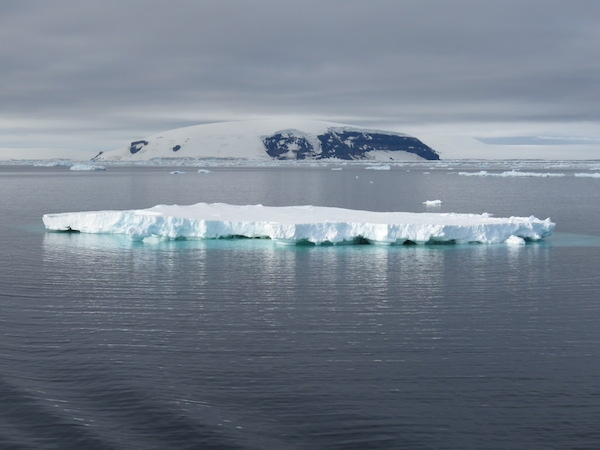

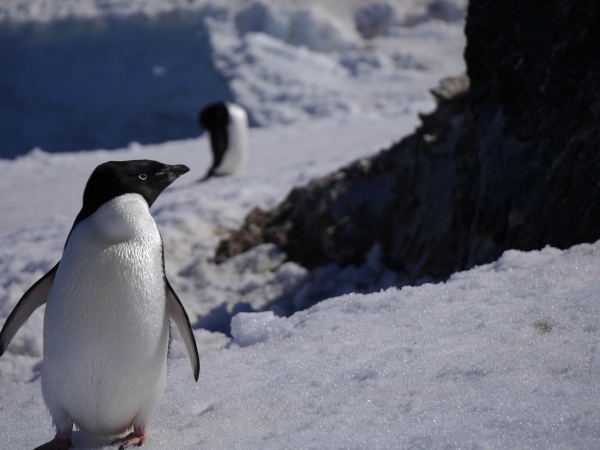
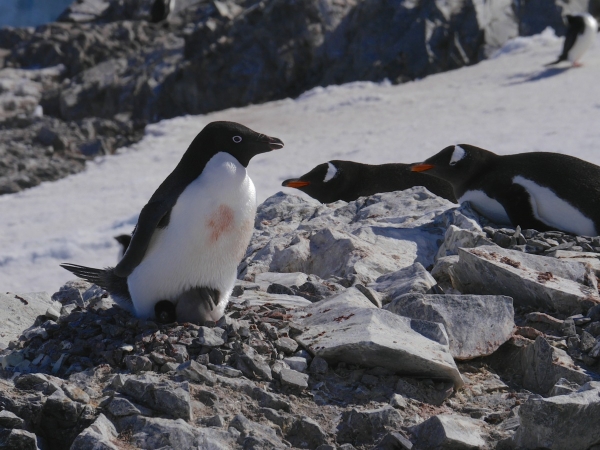
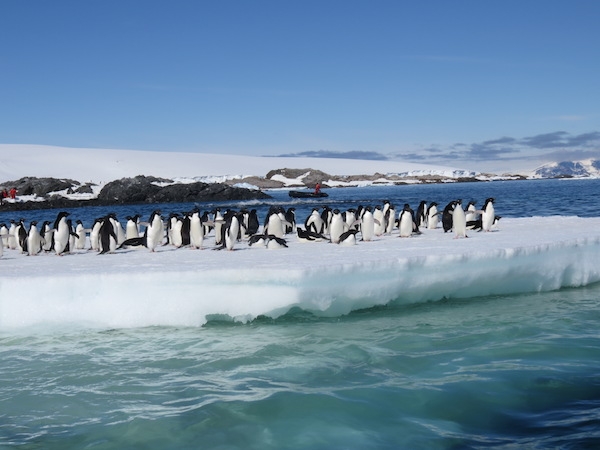
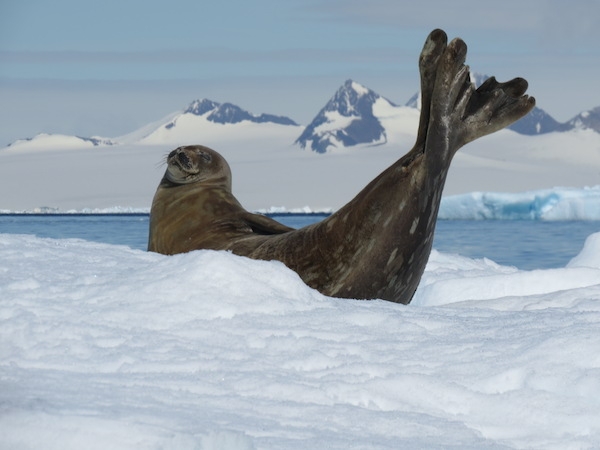
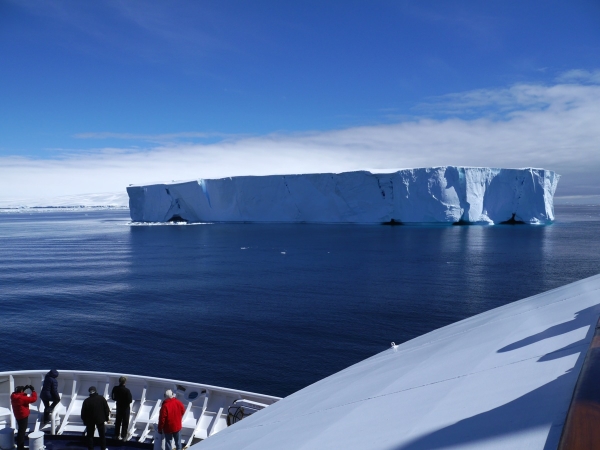

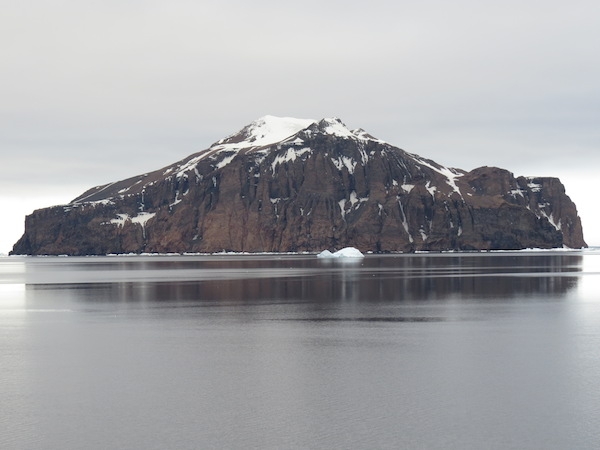

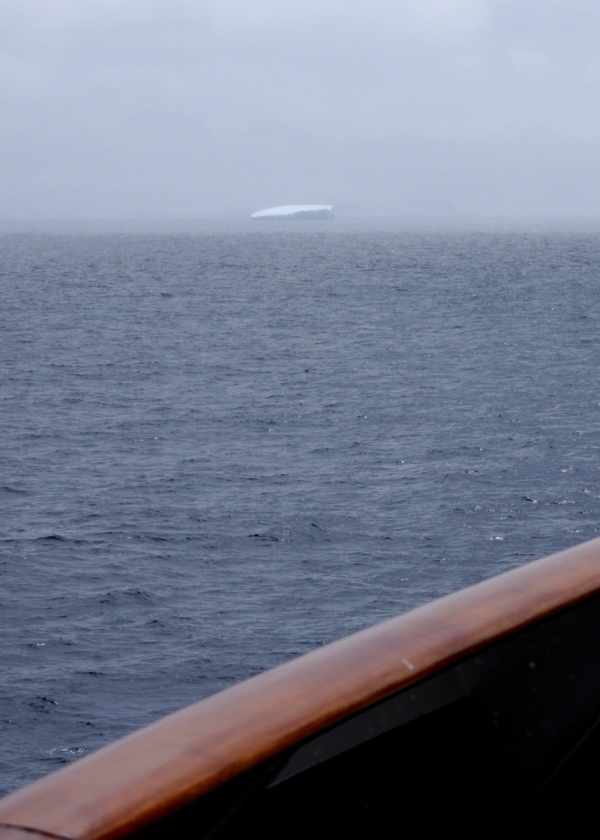

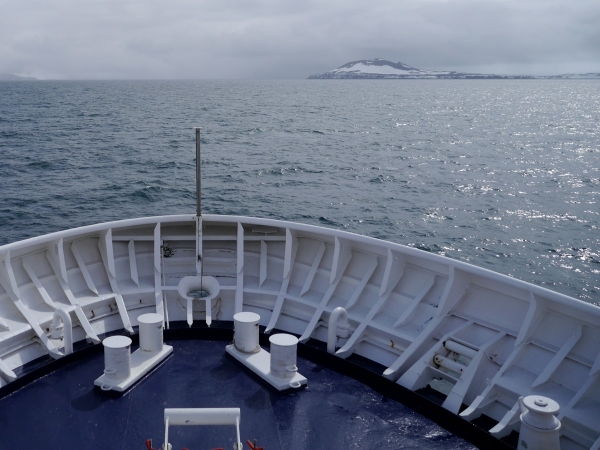



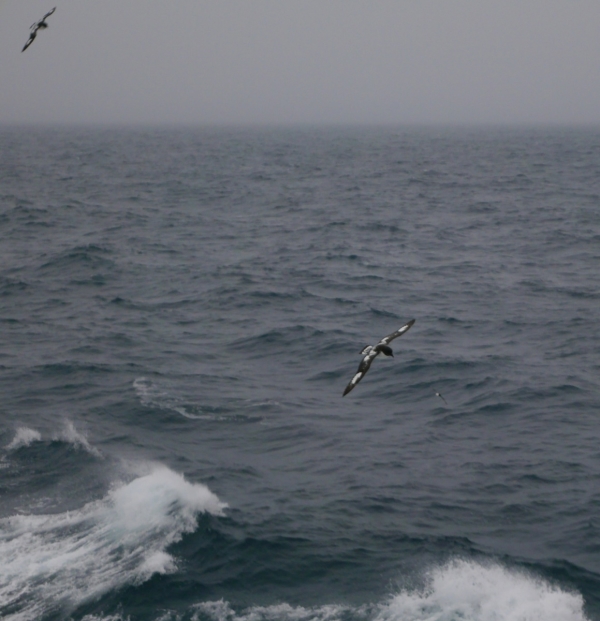
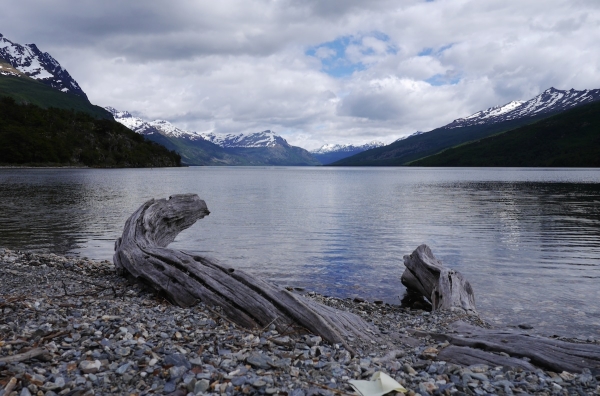
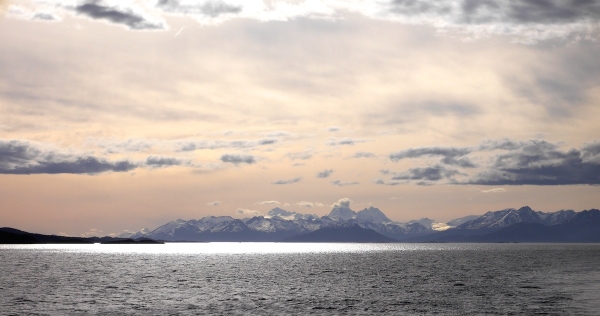
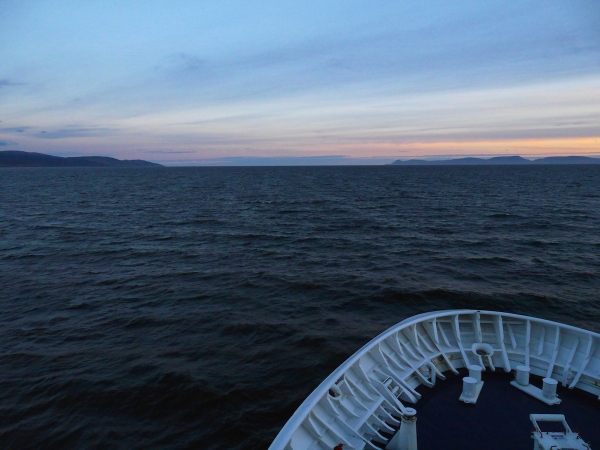


Nice plan for content warnings on Mastodon and the Fediverse. Now you need a Mastodon/Fediverse button on this blog.